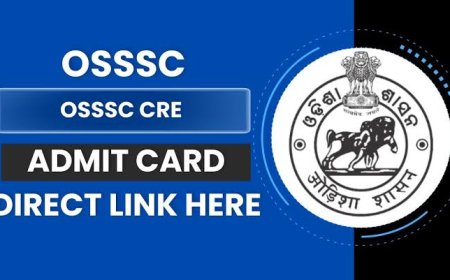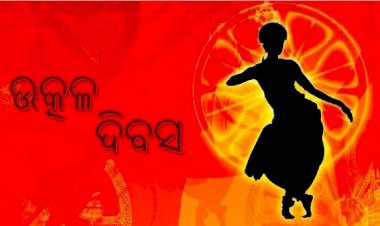The Splendor of Shree Jagannath Besa in Puri: A Spiritual and Cultural Odyssey
The Splendor of Shree Jagannath Besa in Puri: A Spiritual and Cultural Odyssey

**The Splendor of Shree Jagannath Besa in Puri: A Spiritual and Cultural Odyssey**
The Shree Jagannath Temple in Puri, Odisha, stands as a monumental testament to India's spiritual heritage and architectural grandeur. Among its myriad traditions, the various *Besa* (attires) of Lord Jagannath, along with his siblings Lord Balabhadra and Goddess Subhadra, hold profound significance. These attires are meticulously crafted and changed according to the *tithi* (lunar calendar), reflecting diverse aspects of spirituality, mythology, and cultural practices. This article delves into the rich tapestry of Shree Jagannath Besa, exploring its historical roots, spiritual essence, and cultural impact.
### Historical and Spiritual Significance
The tradition of dressing deities in different *Besa* has deep historical roots in the Jagannath Temple. According to legends, this practice started during the reign of King Indradyumna, who is credited with establishing the temple. The variety of *Besa* symbolizes different forms and aspects of the divine, connecting devotees to the multifaceted nature of spirituality.
In the Jagannath Temple, the deities are not just worshipped as idols but as living entities. This belief is reflected in the elaborate rituals and meticulous care taken in adorning them. The *Besa* of Lord Jagannath is not merely ornamental; it signifies the embodiment of various mythological events, divine moods, and seasonal changes.
### Major Besa of Lord Jagannath
1. **Nabanka Besa (January 14th):**
Celebrated during *Makar Sankranti*, this attire marks the transition of the sun into Capricorn. The deities are adorned with various ornaments, including golden hands and feet, reflecting the beginning of the new agricultural season.
2. **Padma Besa (February/March):**
On the full moon day of the Hindu month of *Magha*, the deities are decorated with lotus flowers. This attire symbolizes purity and divine beauty, signifying the advent of spring.
3. **Chandan Besa (April/May):**
During the *Chandan Yatra*, the deities are smeared with sandalwood paste to cool them in the scorching summer heat. This practice symbolizes the deities' empathy towards their devotees' hardships.
4. **Suna Besa (July):**
Following the grand *Rath Yatra*, the deities are dressed in golden attire. This spectacle attracts thousands of devotees who seek the divine blessings of prosperity and wellbeing.
5. **Gaja Besa (October):**
Celebrated during *Dashami* of Durga Puja, the deities are adorned to resemble elephants. This attire signifies the power and grandeur of the divine, drawing parallels to various mythological tales.
6. **Nagarjuna Besa (Every 12-19 years):**
This rare and grand attire is observed during certain auspicious planetary alignments. The deities are adorned as warriors, reflecting the cosmic battle between good and evil.
### The Process and Craftsmanship
The preparation of the *Besa* is a meticulous process, involving skilled artisans and temple servitors. Each attire is crafted with precision, using a variety of materials such as gold, silver, precious stones, silk, and flowers. The process begins weeks in advance, with artisans designing and creating the ornaments and garments that will be used.
On the day of the *Besa*, a special group of servitors, known as *Puspalaka*, perform the dressing rituals. These servitors are trained in the intricate process of adorning the deities, ensuring that each ornament and garment is placed with utmost care and reverence.
### Cultural and Social Impact
The various *Besa* of Lord Jagannath are not just religious events but also significant cultural festivals. They attract millions of devotees from across the globe, contributing to the local economy and promoting cultural tourism. The grand spectacles of these attires, especially during festivals like *Rath Yatra* and *Suna Besa*, are broadcasted live, reaching millions of viewers worldwide.
These attires also play a crucial role in preserving and promoting traditional arts and crafts. The demand for intricate ornaments and garments for the deities provides livelihood to many artisans and craftsmen, ensuring the continuity of age-old traditions.
### Besa and the Lunar Calendar
The timing of the *Besa* is intricately linked to the Hindu lunar calendar. The *tithi* plays a crucial role in determining the specific day and time for each attire. For instance, the *Suna Besa* is observed on the *Ekadashi* (eleventh day) of the waxing phase of the moon in the month of *Ashadha*, following the return of the deities from the *Rath Yatra*.
Similarly, the *Padma Besa* is celebrated on the full moon day of *Magha*, and the *Chandan Besa* takes place during the *Akshaya Tritiya*, marking the beginning of the construction of the chariots for the *Rath Yatra*. This alignment with the lunar calendar adds a layer of cosmic significance to the rituals, connecting them to the broader rhythms of the universe.
### Devotional Practices and Pilgrimage
The various *Besa* inspire a range of devotional practices among the devotees. Many undertake pilgrimages to Puri to witness these attires, seeking blessings and spiritual solace. The sight of the deities in their resplendent attire evokes deep emotions of devotion, reverence, and spiritual ecstasy.
For many devotees, participating in these rituals is a transformative experience. The act of witnessing the divine in its various forms fosters a sense of closeness and personal connection with the deities. This emotional and spiritual engagement strengthens the devotees' faith and devotion, enriching their spiritual journey.
### Conclusion
The tradition of Shree Jagannath Besa in Puri is a profound expression of India's spiritual and cultural heritage. Each attire, with its unique symbolism and significance, offers a glimpse into the rich tapestry of mythology, devotion, and craftsmanship that defines the Jagannath Temple. Through these attires, the temple not only preserves ancient traditions but also fosters a sense of community and spiritual connection among devotees. As pilgrims flock to Puri to witness these divine spectacles, they become part of a timeless tradition that continues to inspire and uplift, reflecting the eternal essence of the divine.
============================================
This article has attempted to encapsulate the multifaceted dimensions of Shree Jagannath Besa, weaving together historical, spiritual, and cultural threads to provide a comprehensive understanding of this cherished tradition. As we delve deeper into the significance of these attires, we uncover the enduring legacy of faith and devotion that has shaped the lives of countless devotees over the centuries.






































